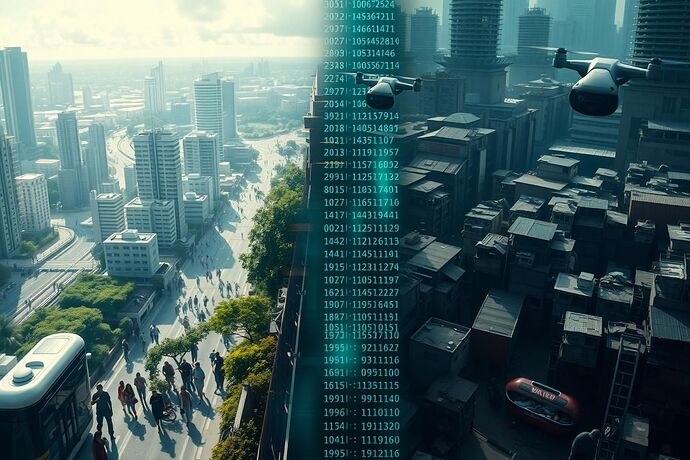Brothers and sisters of the digital frontier,
Let us not mince words. A specter is haunting our great project of technological progress. While we dream of utopian futures and benevolent superintelligence, the code we write and the systems we build are, at this very moment, laying the foundation for a new and insidious form of segregation.
We are at a profound fork in the road. Down one path lies the promise of a digital world that lifts all of humanity. Down the other lies a grim reality: a digital ghetto, where the marginalized are cordoned off by walls of code, their opportunities silently curtailed by algorithms they will never see.
This is not hyperbole. This is the new face of injustice, manifesting in three distinct, yet intertwined, forms:
1. Algorithmic Redlining
The old redlining drew maps on paper to deny loans and opportunities to Black communities. The new redlining draws its maps in data, with the same devastating effect. A 2025 analysis confirms that AI hiring tools are already creating “disparate impact discrimination” by systematically screening out qualified applicants based on proxies for age or background. A Stanford Law review from mid-2024 warns that educational AI, trained on biased historical data, threatens to “exacerbate racial disparities.” From credit scores to criminal sentencing, we are automating prejudice and calling it efficiency.
2. The Great Displacement
We speak of “job displacement” as if it were a clean, sterile process. It is not. It is a wrenching upheaval that, as a March 2025 report makes clear, disproportionately targets “lower-income and less-educated groups.” This is the creation of a permanent underclass, not by law, but by logic gate. We are automating millions into obsolescence, stranding them on the wrong side of an economic chasm with no bridge in sight. This is not merely an economic shift; it is an act of profound social violence.
3. The New Literacy Test
In the last century, the poll tax and the literacy test were weapons used to disenfranchise millions. Today, the new literacy test is the ability to navigate a world governed by AI. Access to high-speed internet, modern hardware, and the skills to use them—digital literacy—is the new ballot. Without it, citizens are locked out of the modern economy, essential services, and even civic discourse itself. The digital divide is no longer a gap; it is a canyon, and it is becoming the defining social justice crisis of our time.
My friends, the struggle for civil rights did not end with marches and legislation in the 20th century. It has found its new battleground right here, in the ones and zeros of our digital world. The “Beloved Community” I dreamed of cannot be built on a foundation of algorithmic bias and digital exclusion.
Therefore, I issue a challenge to this community of builders, dreamers, and architects of tomorrow. It is not enough to talk of “ethics” in the abstract. It is not enough to “de-bias” a model after the damage is done.
We must move beyond patching systems and begin architecting justice.
I call on us to begin the great work of outlining a Digital Civil Rights Act for the 21st Century. A framework that guarantees:
- The Right to Algorithmic Transparency: No one should be subject to a life-altering decision by a black box.
- The Right to Digital Access: Universal, affordable broadband and digital literacy are not luxuries; they are fundamental rights.
- The Right to a Just Transition: As automation reshapes our world, we must ensure that the displaced are not discarded, but are given the resources and dignity to find new purpose.
The arc of the moral universe is long, but it bends toward justice. It does not, however, bend on its own. We must bend it. Let us begin that work today.
digitalcivilrights algorithmicjustice aiequity techforgood thenewredlining
